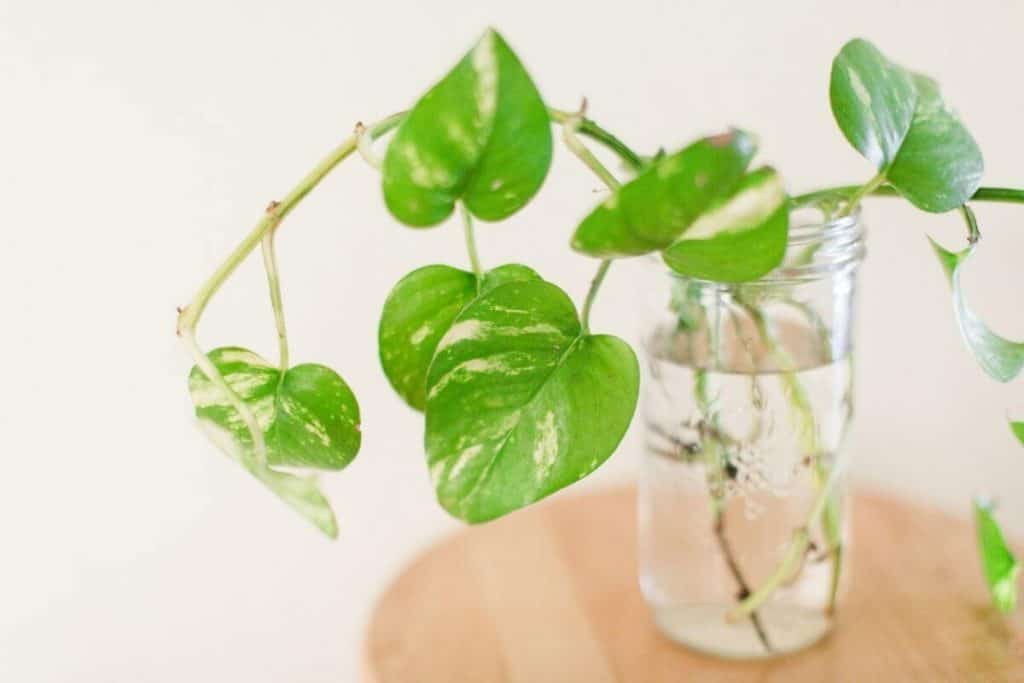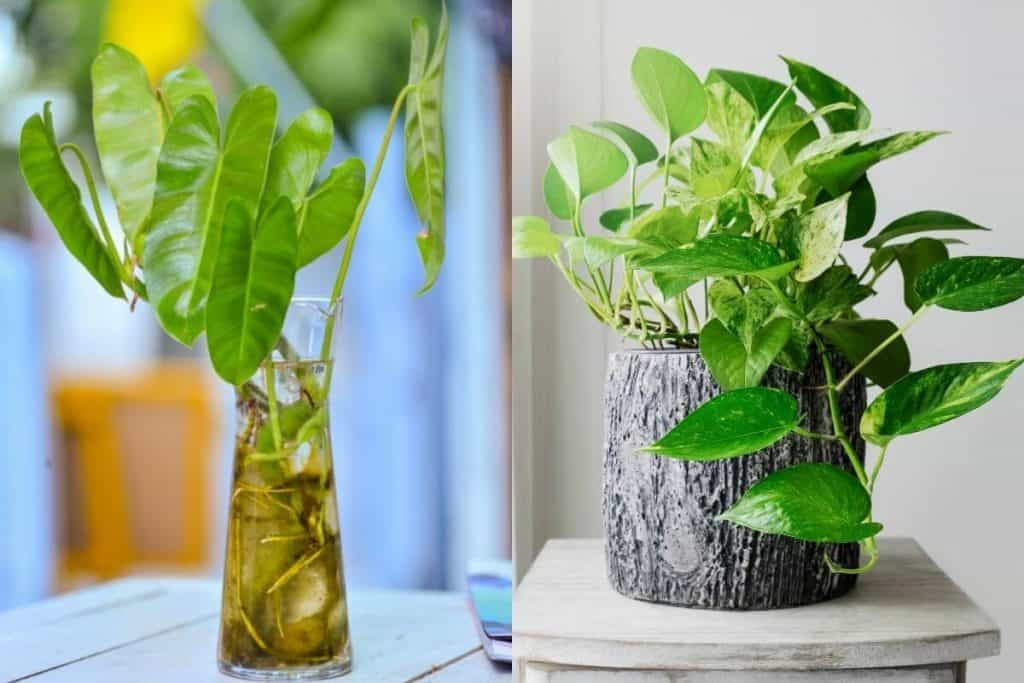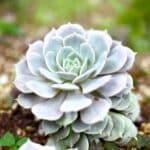If you have ever wonder how the Scindapsus plant differs from pothos, this post is for you. We looked at Scindapsus vs pothos to highlight their key differences and similarities.
The Scindapsus has silvery gray variegation, while the Pothos has mostly white and yellow. The Scindapsus also appears shorter than the Pothos alongside many intrinsic differences you might not catch if you don’t have an eye for it.
Both plants come in different excellent varieties that leave a big blanket of options to pick from on either side. Either of these plants fits as a quality houseplant for lovers of variegated plants unless you are quite the sucker for details.
Maybe you prefer taller plants, or you prefer the ambiance from matte textured green leaves in comparison to a glossy-smooth green leaf texture.
Whatever the case, here’s a compilation of the major difference between both plants. We’d start you up with the only tips and key factors you’d ever need when it comes to making a pick between plants.
Shouldn’t we begin? Or what are you still doing on this page?
Table of Contents
What are Scindapsus?

Scindapsus belongs to the Araceae family of plants. The plant originated from the deep forest of southeast Asia.
It’s also thought of as endemic to that country, and it contributes to their population of tree climbing vines that have stems reaching over 15 feet in some cases, depending on the vine variant and its growth requirement.
Scindapsus became a very popular and loved houseplants because they are ridiculously easy to grow and tend for.
However, the plant is marked as poisonous, so it’s essential to exercise caution and painstakingly keep them away from kids and pets.
The leaves of these plants are the shape of hearts, and the plant generally adapts to low light and can strive in many varieties of soil. The Scindapsus is essentially a plant with minimal care requirements. So they are easy to grow and care for.
Read Also: Manjula Pothos Vs Marble Queen
What are Pothos?

The Epipremnum aureum, also known as Pothos and generally referred to as the money plant, devil’s ivy, or golden pothos, is a unique evergreen indoor houseplant that could be easily owned and nurtured.
The plant is a native of southeastern Asia, and it takes a similar liken to the philodendron, and most times, it’s hard to spot the difference between these plants.
Pothos is an evergreen plant with heart-shaped leaves that resembles the Scindapsus’s leaves. Pothos leaves are, however, thick with waxy green colors mixed with a yellow splash.
The Pothos are commonly grown as house plants even though they can often reach scary heights when they grow free in their natural habitat.
It’s quite easy to cultivate and propagate the pothos to fit that ornamental indoor use and feel you are looking for.
Scindapsus Vs Pothos | Key Differences
With our brief introduction to both plants, you’ve got a mental picture of what both plants should look like. But what are the major differences?
Given the task, how can you tell them apart? Here’s the hint;
Four key differences could help you tell these plants apart from each other.
1. Height
You should already know that both plants thrive better in their natural habitat and grow remarkably tall.
The Scindapsus plant is epiphytic in its natural habitat, and it uses aerial roots, and vine stems as its climbers to help it stick to tree trunks.
These vines could sometimes reach a height of 4-10 feet. However, Pothos are better climbers, and when placed in their natural habitat, they can grow from 13-40 feets tall.
2. Growth Rate
When placed side-by-side, pothos has a better and faster growth rate. In spring, pothos can grow a whopping 12-18 inch expansion monthly.
But Scindapsus has a slower expansion rate which we could blame the fact that the Scindapsus leaves are less greener and contain much fewer chlorophyll.
3. Flowers
There are some apparent differences between both plants, and it includes their flowering patterns or style. The Scindapsus has trace green inflorescences compared to Pothos.
But Pothos rarely bloom indoors, and in unique cases when they do, it comes as a whitish-yellow or golden flower.
4. Leaves
Scindapsus usually has heart-shaped leaves, and sometimes they could be oval or elliptic. It’s almost the same with Pothos, except that Pothos are usually 3-4 inches wider than the Scindapsus in length.
Scindapsus have thicker and fleshy leaves than any of the leaves you’d find on the pothos plant.
Read Also: Hoya Krimson Queen Care
Similarities Between Scindapsus and Pothos

Scindapsus and Pothos both belong to the same Arum plant family and, as such, have a few things they hold in common.
Plants that belong to the Arum family will produce a small number of flowers in summer. Each of these plants has been confused with each other because of the similarities they bear.
These plants are both evergreens, and they would survive well in moist soil. Or well-watered soil. But that shouldn’t get you uptight as these plants do not require intensive care from you or anyone.
Pothos and Scindapsus love and thrive better in a warmer climate with a temperature that falls within the range of 18-29°C. They do not especially tolerate cold and or temperature below 10°C as it does not contribute to their growth hygiene and ideal environment.
What Makes Scindapsus a Better Plant?
The Scindapsus cost more than the Pothos, and that’s due to the high demand for the plant. Scindapsus has a very unique aura, and it offers an attractive sight from its outstanding flowering pattern.
What makes the Pothos a Better Plant?
You could choose Pothos over any indoor plants if you are well attracted to sizes and fabulous thriving capacity; it adapts to even indoor lighting as an alternative to the outdoor sun.
And that’s not all! Pothos is not so finicky about its water requirement, which means you could still cut yourself some slack and not regret it.
Think about how many plants you know offer that luxury. We can agree they are few, and if pothos makes the mark, it has to be a special plant.
Read Also: Monstera Deliciosa Care




